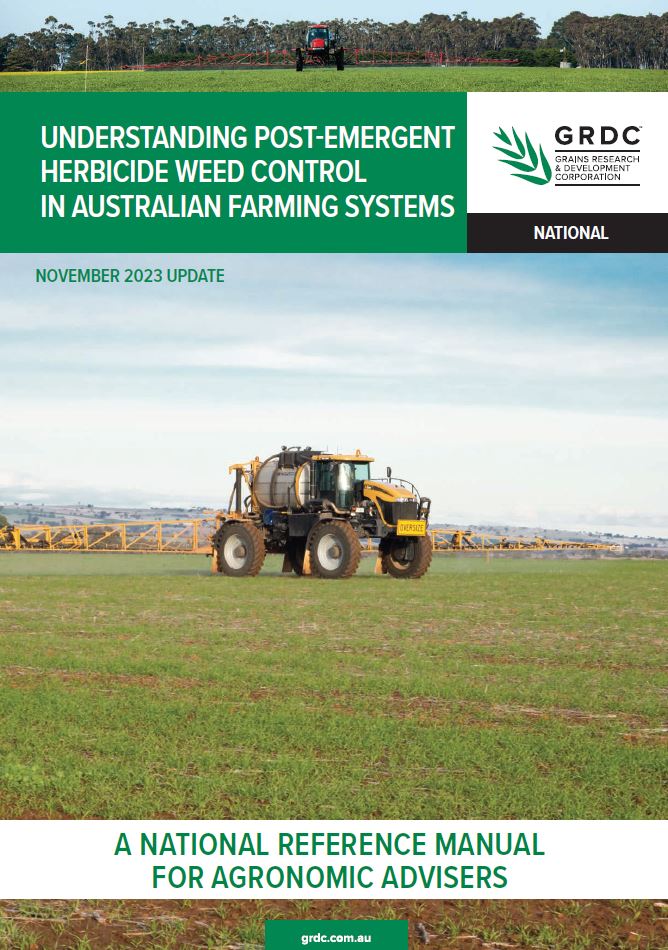Understanding post-emergent herbicide weed control in Australian farming systems
Understanding post-emergent herbicide weed control in Australian farming systems
Published: 6 Nov 2023
Since the advent of herbicides for weed control, growers have readily adopted herbicide tactics, as they are generally a very robust and cost-effective way of managing weed populations in cropping situations.
Following many seasons of extensive herbicide use, Australian farming systems have selected for herbicide resistance in key weed species. This has resulted in many situations where a particular herbicide, or mode of action group, is no longer effective on a particular weed population, or other situations where resistance is developing in the paddock and the herbicide may now be only providing a partial level of control.
In the southern and western region production systems of Australia, resistance was first selected in-crop, primarily for annual ryegrass (Lolium rigidum) to the herbicide modes of action Groups A and B (Australian herbicide mode of action classification system). In comparison, northern Australian grain production systems have selected predominantly for grass weeds resistant to glyphosate. This is due to significant use of summer and winter no-till fallow, heavy reliance on glyphosate for weed control, and comparatively less historical use of in-crop grass herbicides compared to the southern and western regions. Resistance to glyphosate in broadleaf weeds has been slower to emerge, largely due to the regular addition of other modes of action (particularly Group I herbicides) to fallow applications of glyphosate. However resistance to broadleaf weeds is also on the increase.
It is now common for Australian farmers to have one or more weed species on the farm that are resistant to one or more of the post-emergent herbicide groups. Of great concern is the rapid development both in the number of populations and number of weed species that have become resistant to glyphosate.
As post emergent herbicides generally provide high levels of efficacy and are relatively easy to use, they have been given historical prominence in weed management strategies. This has led to their prolonged and widespread use, often in preference to pre-emergent herbicides. Thus, selection for resistance to post-emergent herbicides has been greater than for pre-emergent options.
Despite recent increases in resistance, post-emergent herbicides remain an integral component of weed control strategies in many production systems. As resistance to these herbicides evolves and intensifies, it is important for users to fully understand how these herbicides work and how resistance evolves and is expressed, in order to maximise herbicide performance.
This manual has been developed by Independent Consultants Australia Network for the Grains Research and Development Corporation to provide advisers and growers with the background science and information to better understand how post-emergent herbicides work and to better inform their choices when using these products.
Want a hard copy?
GRDC produces a range of publications to share the RD&E knowledge generated from our investments with grain growers and the broader industry.
Printed publications
Printed copies of some publications are available for growers, advisers and farming systems groups, for personal use and distribution at GRDC events.
Contact GroundCover Direct on 1800 11 00 44 or email ground-cover-direct@canprint.com.au to request copies. Publications are free but postage and handling costs may apply.
Download PDF
Region: National
ISBN: 978-1-922342-51-5 (print)
ISBN: 978-1-921779-58-9 (Online)
GRDC Project Code: ICN1811-001SAX, ICN2307-001SAX,

